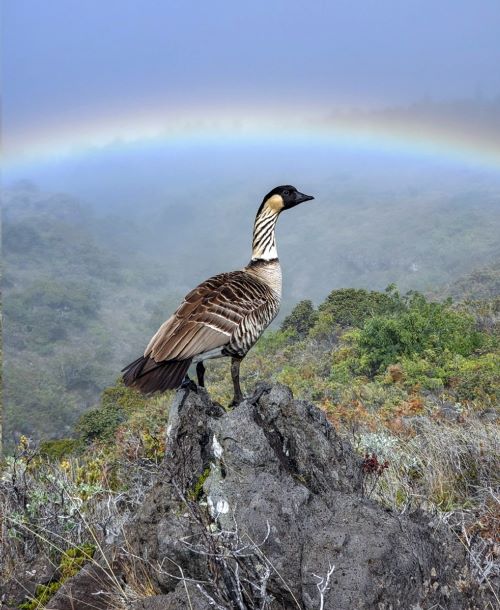
Nēnē: A Hawaiian Bird’s Success Story
/ Bird News, General Updates / By
Susan Scott
A Success Story: 10 Things We Want to Share About Hawaiʻi's State Bird, the Nēnē (Hawaiian Goose)
By Susan Scott
- Nēnē is the only survivor of six endemic goose species that once lived in the Hawaiian Islands.
- In the early 1800s, about 25,000 nēnē lived on Hawaiʻi Island. Due to hunting, habitat loss, and introduced predators, by 1952 less than 30 nēnē remained in the wild.
- Captive-breeding programs in Europe, the U.S. mainland, and Hawaiʻi bred nēnē to increase the wild population. The Honolulu Zoo began raising nēnē in 1949.
- Between 1960 and 1997, conservationists released over 2,000 nēnē on Maui and Hawaiʻi Island. Cats, dogs, and mongooses killed most of the birds but some survived at high elevations.
- Kauaʻi was excluded because no one thought nēnē had ever lived on Kauaʻi. After finding nēnē fossils on Kauaʻi, however, officials released 12 nēnē at Kīlauea Point National Wildlife Refuge from 1991 through 2000. Lacking mongooses, Kauaʻi’s nēnē have thrived.
- In 2022, the statewide nēnē population was 3,862. Of those, 2,430, or 75%, live on Kauaʻi.
- After 70 years of federal, state, local, and international groups working together, in 2019 the nēnē was downlisted from an endangered species to a threatened species.
- Saving the nēnē from extinction is one of the most successful wildlife restoration efforts in Hawaiʻi.
- Today, you can see nēnē in stable or increasing populations on Kaua‘i, Maui, Hawai‘i Island, and Moloka‘i.
- Adults make soft mewing or mooing sounds, loud cackling calls when alarmed, and goose-like trumpeting sounds: Listen and learn more.

